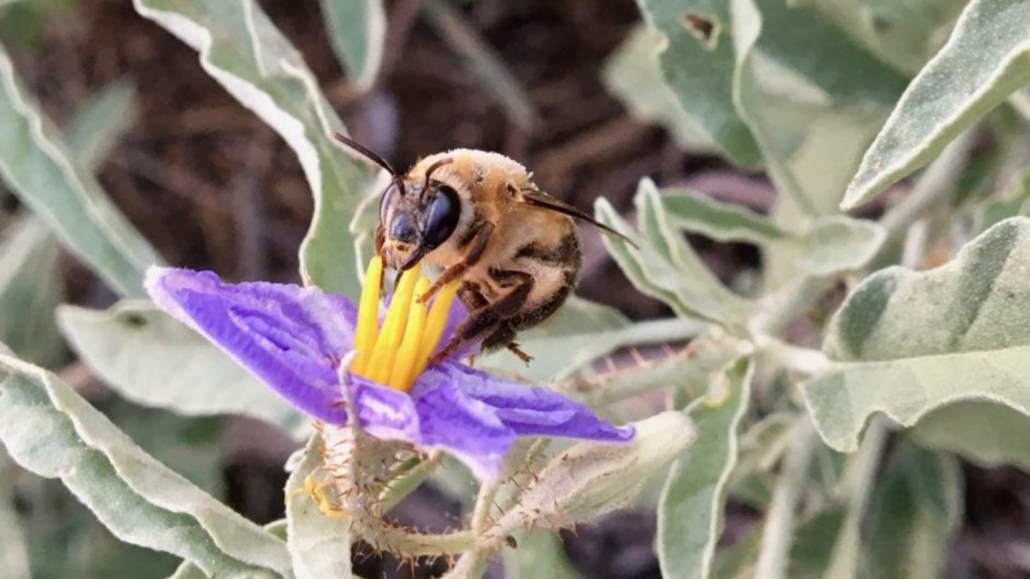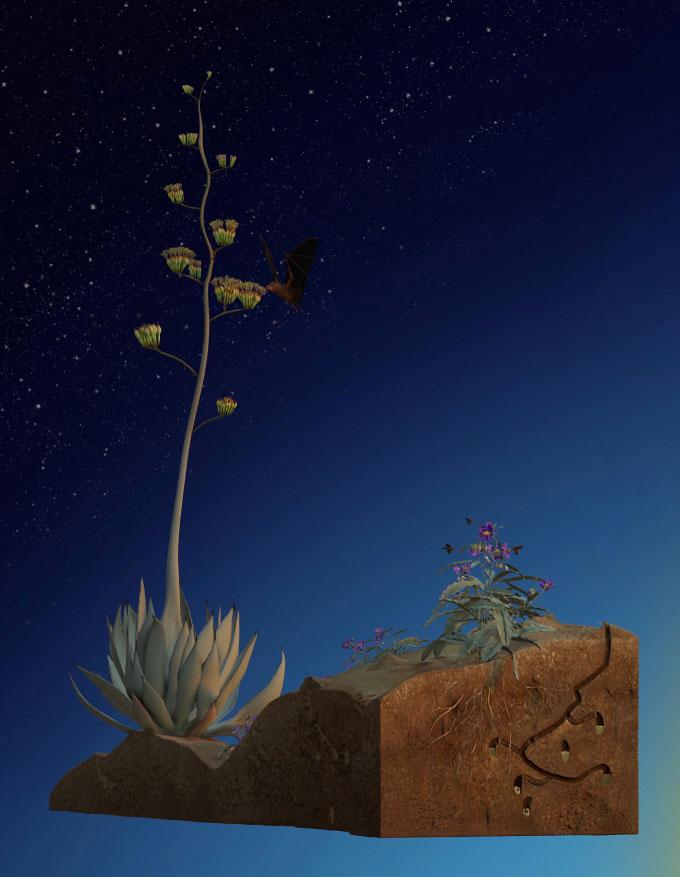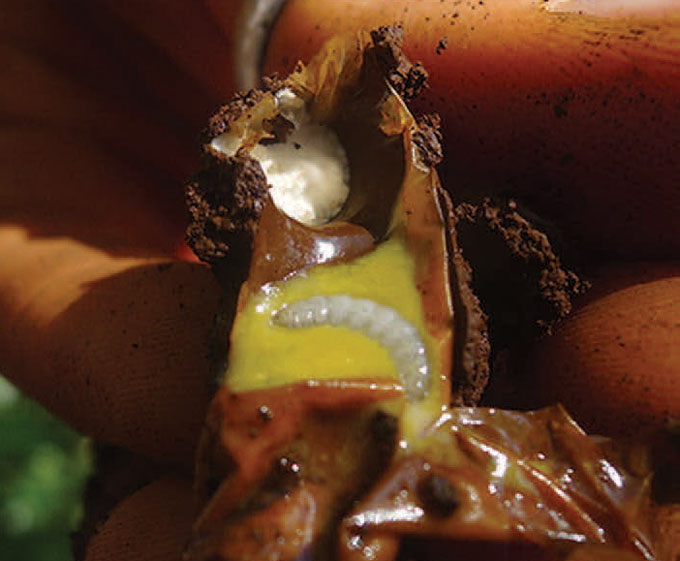‘Polyester bees’ brew beer-scented baby food in plastic cribs
Solitary moms set up an unusual microbrewery for each egg

A kind of cellophane bee, Ptiloglossa arizonensis, collects pollen from a silverleaf nightshade flower. She will mix the pollen with nectar in homemade plastic cribs to create runny beer-scented baby food for her young.
Tobin Hammer
Female Ptiloglossa bees are single moms with a lot to do and little time. Fortunately, they can use a feathery tongue to make infant-care plastics and then brew up batches of baby food.
“We jokingly call them polyester bees,” says pollination ecologist Stephen Buchmann of the University of Arizona in Tucson.
Chemically, the bee-made plastic is a cousin of human-made polyesters. A big gland on a female’s abdomen secretes Tinkertoy-like molecules of repeating lactone compounds, each with its “ester” structural bit that gives polyester its name.

The stuff makes the finishing touch for little urn-shaped nursery chambers that mother bees dig underground. They use their paintbrush tongues to lick up the gland secretion and slather it on nursery walls.
The plastic layer is transparent, tough and “can be kind of crunchy,” Buchmann says. It’s “thought to keep the brood chamber area nice and cozy, high-humidity and also to keep out the bad guys.”
These moms are doomsday preppers. In the P. arizonensis Buchmann studies in Arizona, females have only a few weeks to fill plastic retreats with all the food each youngster needs for much of a year underground before its own, brief reproductive frenzy in sunlight. Each generation of big, fast-flying bees grows up floating in, and feeding on, nothing but mom’s limited-edition brew of nectar and pollen — which smells like beer.
Many other bee species mix their baby food of pollen and nectar to “a kind of Play-Doh consistency,” Buchmann says. “Poke it and it dents.” Food stored in a cellophane bee nest, however, is different.
Open and tilt a nursery of baby Ptiloglossa bees “and all this stuff would run out it’s so watery,” Buchmann says. That’s probably because of the unusually watery nectar these polyester bees collect. Much of it comes from the candelabra-shaped bloom spikes of agave plants, runny enough for easy slurping by bats in southeastern Arizona and Sonora, Mexico.
To see what’s in the beer-scented brew, bee microbiome researcher Tobin Hammer of the University of California, Irvine, recruited Buchmann to collect several plastic-making P. arizonensis bees as well as relatives in the larger group called cellophane bees. Collecting the bees, their brood cells, food gatherings and source flowers took several years, mostly of waiting. Bees fly aboveground only a few weeks a year, and then for only about two hours around dawn.
“Quite shocking,” is Buchmann’s summary of what he found. Despite the beery smell of the food that P. arizonensis puts in the plastic vats, he says, “lo and behold, no yeast!”
These bees’ microbial fermenters didn’t evolve anywhere in the vast fungal kingdom. Instead, the fermenters are mostly lactic acid bacteria, Hammer, Buchmann and colleagues reported April 5 in Frontiers in Microbiology. The bees’ baby food glop is not yeasty beer but, Hammer says, closer to yogurt or sauerkraut.

Buchmann doubts that young bees take moms’ bacterial culture along when they leave home. Youngsters go through much of their early growth without pooping as far as bee science knows. Then they defecate “all at once,” Buchmann says. This clears the gut of the microbes, and the ejected wastes get separated from the youngster as it wraps itself in silk for its next stage of life.
The aboveground world that youngsters eventually join offers plenty of replacement bacteria. It flourishes in flowers — or “plant genitals,” as Buchmann calls them in his new book What a Bee Knows. Somehow the variety of microbes bees encounter gets winnowed down for baby food, lab analyses suggest. Just how is still an open question.
What the great coming-of-age poop does resolve for human sensibilities is the thought of how bee larvae without diapers can feed month after month on food they’re floating in.






